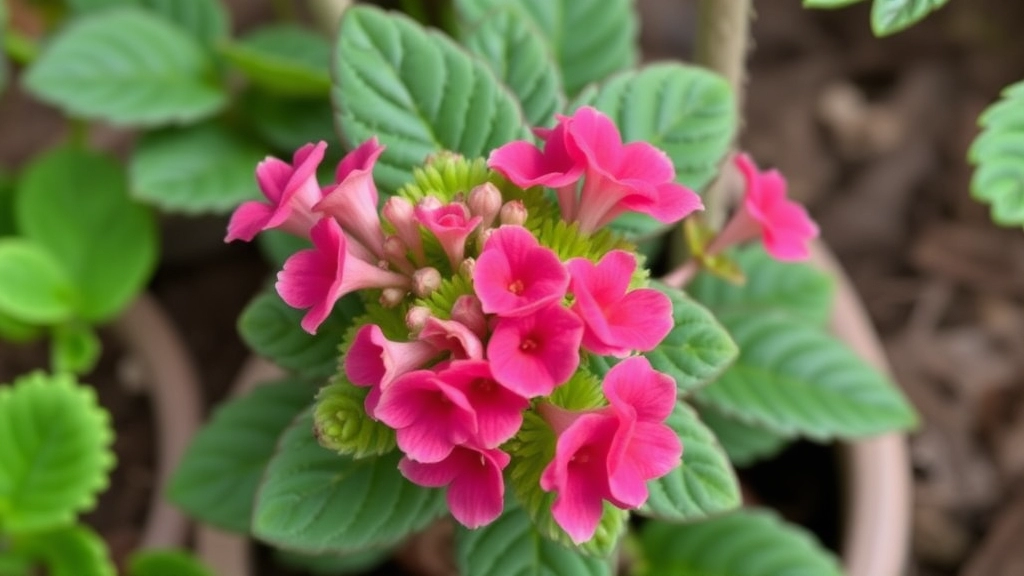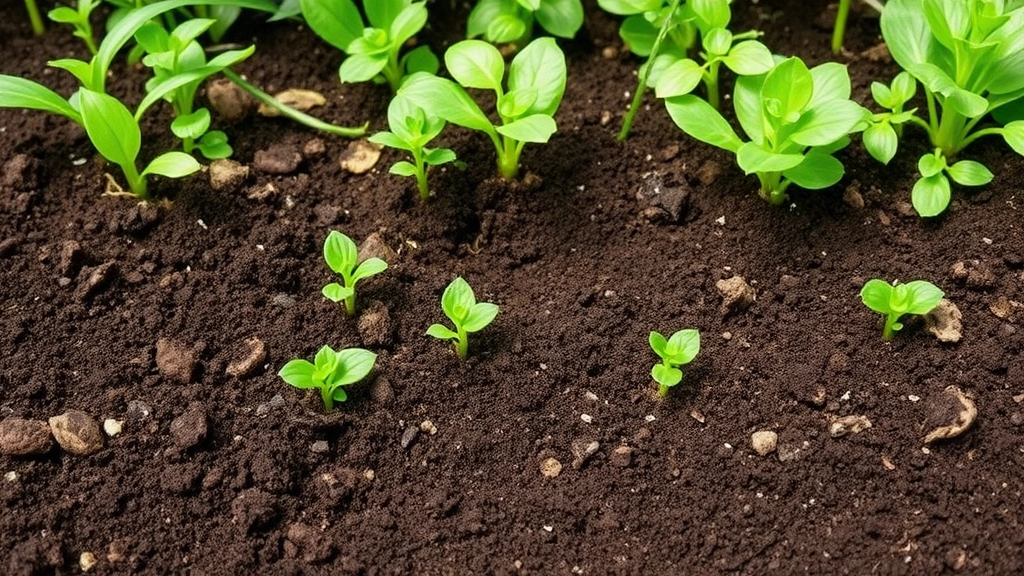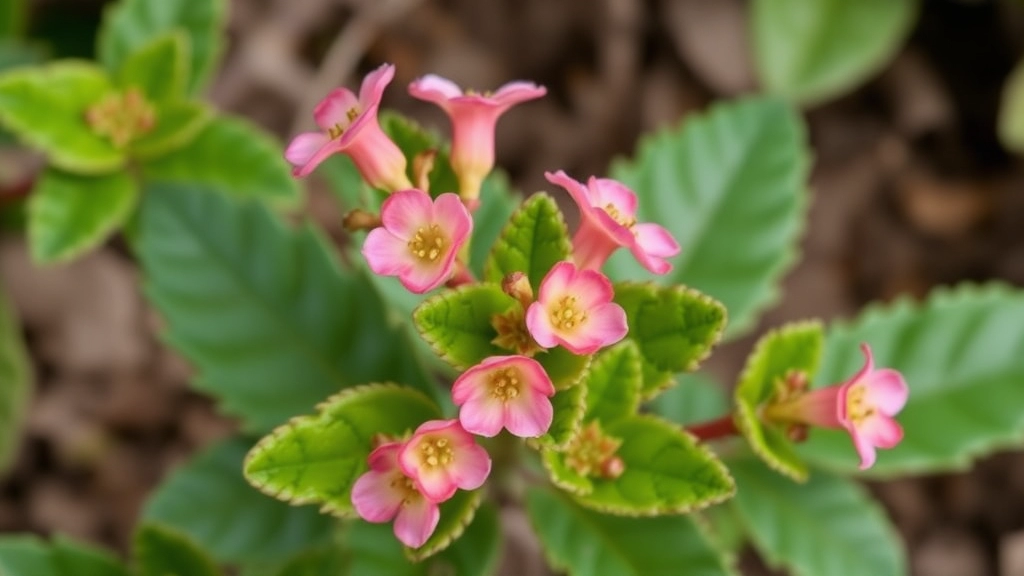Kalanchoe Tomentosa Cinnamon: A Unique Succulent
Are you looking to add a unique and captivating succulent to your collection? Look no further than the Kalanchoe Tomentosa Cinnamon. This distinctive plant, with its fuzzy leaves and cinnamon-hued edges, is a favourite among gardening enthusiasts and collectors alike. In this article, we’ll delve into the key features of Kalanchoe Tomentosa Cinnamon, its growth expectations, and essential care tips to keep it thriving.
Care and Maintenance
Kalanchoe Tomentosa Cinnamon is not just a pretty plant; it’s relatively easy to care for, making it perfect for both novice and experienced gardeners. From understanding its light and temperature needs to mastering the art of watering and soil preferences, we’ve got you covered. We’ll also touch on:
- Seasonal dormancy
- Common issues like pests and overwatering
- Safe propagation techniques
Toxicity Concerns
Plus, we’ll discuss its toxicity concerns for pets and how to best incorporate this stunning succulent into your home’s decor.
Are you on the lookout for a unique houseplant that brings both beauty and character to your space?
Kalanchoe Tomentosa âCinnamon’ might just be the perfect choice for you.
This succulent, often affectionately known as the âPanda Plant,â boasts several distinctive features that set it apart from other houseplants.
## Distinctive Characteristics
– **Fuzzy Leaves**: One of its most striking attributes is its velvety leaves, which are covered in fine, soft hairs. This texture not only adds visual interest but also helps the plant retain moisture.
– **Cinnamon-Hued Edges**: True to its name, the âCinnamon’ variety showcases beautiful reddish-brown edges on its leaves, giving it a warm, inviting appearance.
– **Compact Growth**: Typically growing to about 30 cm (12 inches) in height, Kalanchoe Tomentosa âCinnamon’ is perfect for small spaces or as a charming tabletop plant.
– **Flowering Potential**: When given the right conditions, this succulent can produce clusters of tubular yellow flowers, adding a burst of colour to your indoor garden.
These key features make Kalanchoe Tomentosa âCinnamon’ not just a plant, but a conversation starter.
## Why Choose Kalanchoe Tomentosa âCinnamon’?
If you’re seeking a low-maintenance plant that still offers visual appeal, this succulent is an excellent option.
Its unique aesthetics, combined with its hardiness, make it suitable for both novice and experienced plant owners alike. For more insights on how to grow and care for Kalanchoe varieties, check out our [complete care guide for Kalanchoe Blossfeldiana](https://planthq.org/complete-care-guide-for-kalanchoe-blossfeldiana-succulent/).
Additionally, if you’re interested in the health benefits of Kalanchoe plants, you might find our article on the [medicinal uses and health benefits of Kalanchoe Pinnata](https://planthq.org/medicinal-kalanchoe-pinnata-health-benefits-and-uses/) particularly enlightening.
Growth and Size Expectations of Kalanchoe Tomentosa ‘Cinnamon’

So, you’re wondering how big your Kalanchoe Tomentosa ‘Cinnamon’ will get, right?
Well, let’s dive into what you can expect.
Size and Growth Rate
- Height: Typically, this charming succulent grows to about 30-50 cm (12-20 inches) tall.
- Spread: It can spread out to around 30-40 cm (12-16 inches) wide.
Growth Rate
- Moderate Grower: Unlike other succulents that shoot up quickly, Kalanchoe Tomentosa ‘Cinnamon’ has a more relaxed growth pace.
- Ideal Conditions: With the right light, water, and soil, you’ll see it thrive and slowly fill out its space.
Seasonal Changes
- Spring and Summer: This is when you’ll notice the most growth. It loves to soak up the sun during these warmer months.
- Autumn and Winter: Growth slows down significantly, and you might even see it go a bit dormant.
Tips for Encouraging Growth
- Fertilization: A light feed during spring can help kickstart its growth.
- Repotting: If you notice it’s outgrowing its pot, consider repotting every couple of years.
Understanding the light and temperature needs of Kalanchoe Tomentosa âCinnamon’ is essential for its healthy growth. This succulent thrives in bright, indirect sunlight. Aim for around 6 hours of bright light daily, but avoid direct sunlight to prevent scorching the leaves. For indoor placement, a south-facing window with filtered light is ideal.
Kalanchoe Tomentosa âCinnamon’ flourishes between 20°C to 25°C (68°F to 77°F) and is sensitive to cold, so protect it from temperatures below 10°C (50°F). This plant prefers low humidity, making it perfect for dry indoor environments. For more detailed care tips, you might find the [complete care guide for Kalanchoe Blossfeldiana](https://planthq.org/complete-care-guide-for-kalanchoe-blossfeldiana-succulent/) helpful. Additionally, if you’re interested in other varieties, the [care guide for flowering Kalanchoe Blossfeldiana](https://planthq.org/care-guide-for-flowering-kalanchoe-2030cm-tall-blossfeldiana/) offers valuable insights.
Watering and Soil Preferences

When caring for Kalanchoe Tomentosa ‘Cinnamon’, understanding its watering and soil preferences is crucial for its health and vibrancy.
Watering Needs
One of the most common concerns for plant owners is how often to water.
- Frequency: Kalanchoe Tomentosa prefers to dry out between waterings. Typically, watering every 2-3 weeks is sufficient, depending on the season.
- Signs of Overwatering: Yellowing leaves or a mushy stem are clear indicators that you may be overwatering.
- Signs of Underwatering: Conversely, if the leaves start to shrivel, it’s time to give your plant a drink.
Soil Preferences
The right soil can make all the difference in your plant’s growth.
- Well-Draining Soil: Opt for a cactus or succulent mix that allows for quick drainage.
- DIY Mix: If you’re feeling adventurous, create your own mix using equal parts potting soil, sand, and perlite. This ensures good aeration and drainage.
Additional Considerations
- Pot Choice: Choose pots with drainage holes to prevent water from accumulating at the bottom.
- Seasonal Adjustments: During the growing season (spring and summer), increase watering slightly, while in the dormant season (fall and winter), reduce it.
Understanding the seasonal dormancy and growth cycle of Kalanchoe Tomentosa âCinnamon’ is essential for ensuring its health and vitality.
Many plant enthusiasts often wonder why their beloved Kalanchoe seems to slow down or even stop growing during certain times of the year. This is perfectly normal and can be attributed to its natural growth cycle.
### Growth Cycle Overview
– **Active Growth Period:**
– Kalanchoe Tomentosa typically thrives during the spring and summer months.
– During this time, you can expect vibrant growth and the potential for flowering.
– **Dormancy Phase:**
– As autumn approaches, the plant enters a dormancy phase.
– This period usually lasts from late autumn through winter.
– Growth significantly slows down, and the plant conserves energy.
### Key Indicators of Dormancy
– Leaves may become less vibrant.
– Growth may appear stunted or halt altogether.
– The plant may require less frequent watering.
### Tips for Care During Dormancy
– **Reduce Watering:**
– Cut back on watering to prevent root rot.
– **Maintain Temperature:**
– Keep the plant in a cooler environment, ideally between 10-15°C. For more detailed care, you can refer to the [optimal care for Kalanchoe Blossfeldiana growth](https://planthq.org/optimal-care-for-kalanchoe-blossfeldiana-growth/).
– **Limit Fertiliser:**
– Avoid fertilising during this period to allow the plant to rest. For additional guidance, check out this [complete care guide for Kalanchoe Blossfeldiana succulent](https://planthq.org/complete-care-guide-for-kalanchoe-blossfeldiana-succulent/).
Common Issues: Pests and Overwatering Prevention

So, you’ve got your Kalanchoe Tomentosa ‘Cinnamon’ thriving, but what about those pesky problems that can pop up?
Pests to Watch For
Even the hardiest plants can face a few unwelcome guests. Here’s what to keep an eye on:
- Mealybugs: These little white critters love to hide in the nooks and crannies. If you spot them, a cotton swab dipped in rubbing alcohol can do wonders.
- Spider Mites: If your leaves start looking dusty or webby, you might have these tiny troublemakers. A good shower can wash them away, but if not, consider neem oil.
- Aphids: They’re tiny, but they can cause big issues. A blast of water can dislodge them, or you can use insecticidal soap for a more targeted approach.
Overwatering: The Silent Killer
Now, let’s chat about overwatering—this is where many plant parents go wrong. Kalanchoe Tomentosa ‘Cinnamon’ is a succulent, which means it thrives on neglect rather than constant watering. Here’s how to keep your plant happy:
- Soil Check: Make sure the soil dries out completely between waterings. Stick your finger in the soil—if it’s dry an inch down, it’s time to water.
- Pot Choice: Always use a pot with drainage holes. This helps excess water escape and keeps your roots from sitting in soggy soil.
- Signs of Trouble: Yellowing leaves or a mushy stem? That’s a red flag for overwatering. Cut back on the watering schedule and let your plant recover.
By being vigilant about pests and mindful of watering, you can keep your Kalanchoe Tomentosa ‘Cinnamon’ in tip-top shape.
Safe Propagation Techniques
When it comes to propagating Kalanchoe Tomentosa âCinnamon’, many enthusiasts often wonder about the best methods to ensure successful growth.
Here are some effective techniques to consider:
- Leaf Cuttings:
- Choose a healthy leaf from the parent plant.
- Allow the cut end to dry for a day or two to form a callus.
- Place the leaf on well-draining soil, ensuring it is slightly buried.
- Water lightly and keep the soil moist but not soggy.
- Stem Cuttings:
- Select a healthy stem and cut it just below a leaf node.
- Let the cutting dry for a few days to form a callus.
- Plant the cutting in a pot with cactus mix or sandy soil.
- Water sparingly until roots develop.
- Offsets:
- Look for small offsets or pups that grow around the base of the plant.
- Gently remove them with a clean knife.
- Allow them to dry for a day before planting in fresh soil.
Tips for Success:
- Always use clean, sharp tools to prevent disease.
- Keep the propagated plants in a warm, bright spot, but away from direct sunlight initially.
- Be patient; rooting can take several weeks.
By employing these safe propagation techniques, you can expand your collection of Kalanchoe Tomentosa âCinnamon’ with confidence. For more detailed care tips, check out our Complete Care Guide for Kalanchoe Blossfeldiana. Additionally, if you’re interested in other varieties, visit our guide on Kalanchoe Blossfeldiana Hybrid Care.
Toxicity Concerns for Pets

When it comes to bringing Kalanchoe Tomentosa ‘Cinnamon’ into your home, you might wonder, “Is this plant safe for my furry friends?”
Well, here’s the scoop: Kalanchoe, including the ‘Cinnamon’ variety, is toxic to pets.
What does this mean for your pets?
- Cats and Dogs: Both can experience symptoms like vomiting, diarrhea, and lethargy if they munch on the leaves.
- Signs to Watch For: If your pet seems off after being around the plant, keep an eye out for unusual behaviour or digestive issues.
How to Keep Your Pets Safe:
- Placement: Keep your Kalanchoe out of reach. High shelves or hanging planters can do the trick.
- Education: Teach your pets what’s off-limits. It sounds silly, but it can help!
- Alternatives: If you’re worried, consider pet-friendly plants like spider plants or Boston ferns.
When considering how to incorporate Kalanchoe Tomentosa âCinnamon’ into your home décor, you might wonder about its versatility and aesthetic appeal. This charming succulent can effortlessly enhance various spaces, bringing a touch of nature indoors.
### 1. Ideal Locations:
– **Bright Windowsills:** Kalanchoe Tomentosa thrives in bright light, making a sunny windowsill an ideal spot.
– **Desk Accents:** Its compact size makes it perfect for desks, adding a refreshing vibe to your workspace.
– **Coffee Tables:** A small pot of this succulent can serve as an eye-catching centrepiece.
### 2. Complementary Pairings:
– **Mix with Other Succulents:** Combine Kalanchoe Tomentosa with other succulents for a vibrant display.
– **Use Decorative Pots:** Choose pots that complement your home’s colour scheme, enhancing its visual appeal.
### 3. Seasonal Displays:
– **Festive Arrangements:** During holidays, consider incorporating Kalanchoe Tomentosa into seasonal displays for a unique twist.
– **Outdoor Spaces:** In warmer months, place it on patios or balconies to create a lush, inviting atmosphere.
### 4. Careful Considerations:
– **Avoid Overcrowding:** Ensure it has enough space to grow without competing with other plants for light.
– **Rotate Regularly:** To promote even growth, rotate the pot occasionally to ensure all sides receive adequate sunlight.
For more detailed care tips, you can check out the [complete care guide for Kalanchoe Blossfeldiana](https://planthq.org/complete-care-guide-for-kalanchoe-blossfeldiana-succulent/). Additionally, if you are interested in the medicinal and decorative uses of other varieties, visit our [Kalanchoe Blossfeldiana medicinal and decorative uses guide](https://planthq.org/kalanchoe-blossfeldiana-medicinal-and-decorative-uses/).
FAQs About Kalanchoe Tomentosa ‘Cinnamon’
How tall and wide can Kalanchoe Tomentosa ‘Cinnamon’ grow?
Kalanchoe Tomentosa ‘Cinnamon’ typically grows to about 30-50 cm (12-20 inches) in height and can spread out to around 30-40 cm (12-16 inches) wide.
What is the growth rate of Kalanchoe Tomentosa ‘Cinnamon’?
This succulent is a moderate grower. It grows at a steady pace, especially under ideal conditions of light, water, and soil.
When does Kalanchoe Tomentosa ‘Cinnamon’ grow the most?
The plant shows the most growth during the spring and summer months. Growth slows down significantly in autumn and winter, and the plant may even go a bit dormant.
How often should I water my Kalanchoe Tomentosa ‘Cinnamon’?
Watering every 2-3 weeks is usually sufficient. Allow the soil to dry out between waterings to prevent overwatering.
What type of soil is best for Kalanchoe Tomentosa ‘Cinnamon’?
Opt for a well-draining soil, such as a cactus or succulent mix. You can also create your own mix using equal parts potting soil, sand, and perlite.
What pests should I watch for on my Kalanchoe Tomentosa ‘Cinnamon’?
Common pests include mealybugs, spider mites, and aphids. Regular inspection and prompt treatment can keep these pests at bay.
How can I prevent overwatering my Kalanchoe Tomentosa ‘Cinnamon’?
Ensure the soil dries out completely between waterings, use pots with drainage holes, and watch for signs like yellowing leaves or a mushy stem.
Is Kalanchoe Tomentosa ‘Cinnamon’ toxic to pets?
Yes, Kalanchoe Tomentosa ‘Cinnamon’ is toxic to pets. Symptoms in cats and dogs can include vomiting, diarrhea, and lethargy if they ingest the plant.
How can I keep my pets safe around Kalanchoe Tomentosa ‘Cinnamon’?
Place the plant out of reach, educate your pets about off-limits areas, or consider pet-friendly plant alternatives like spider plants or Boston ferns.
References
-
The Spruce – Growing Kalanchoe Tomentosa
-
Gardener’s World – How to Grow Kalanchoe
-
House Plants Expert – Kalanchoe Tomentosa
